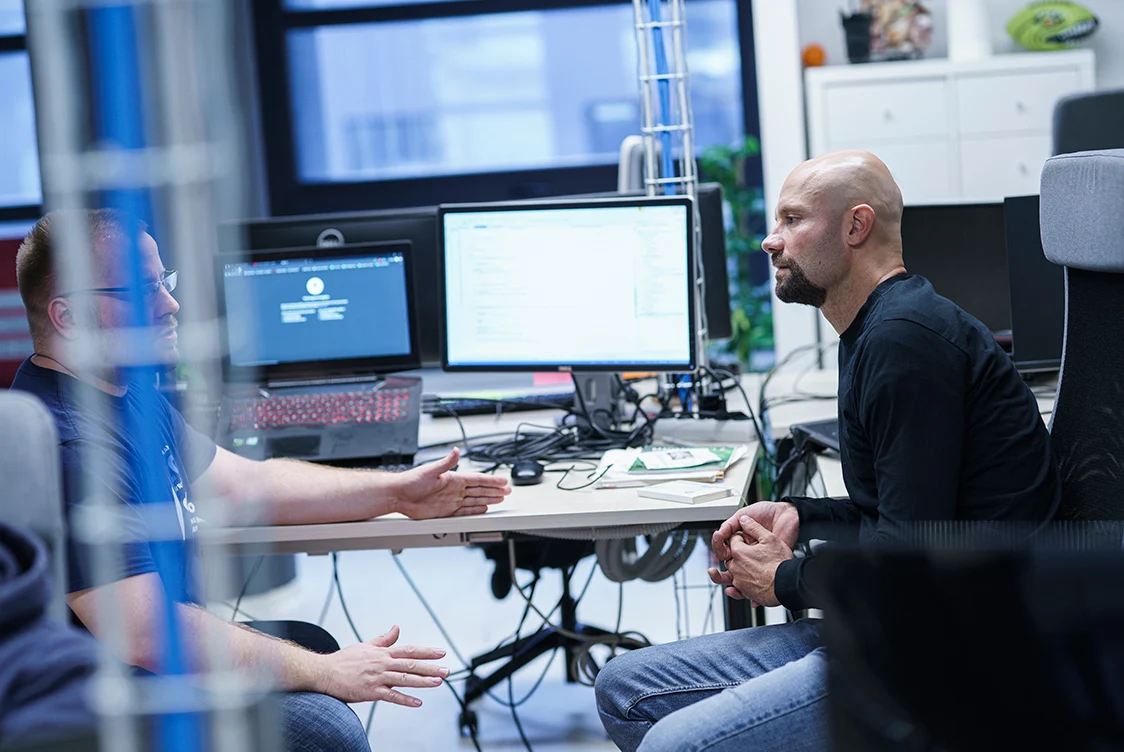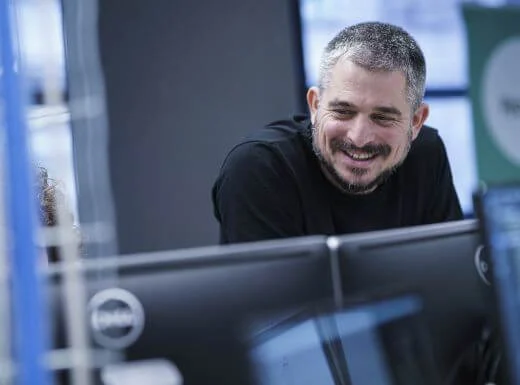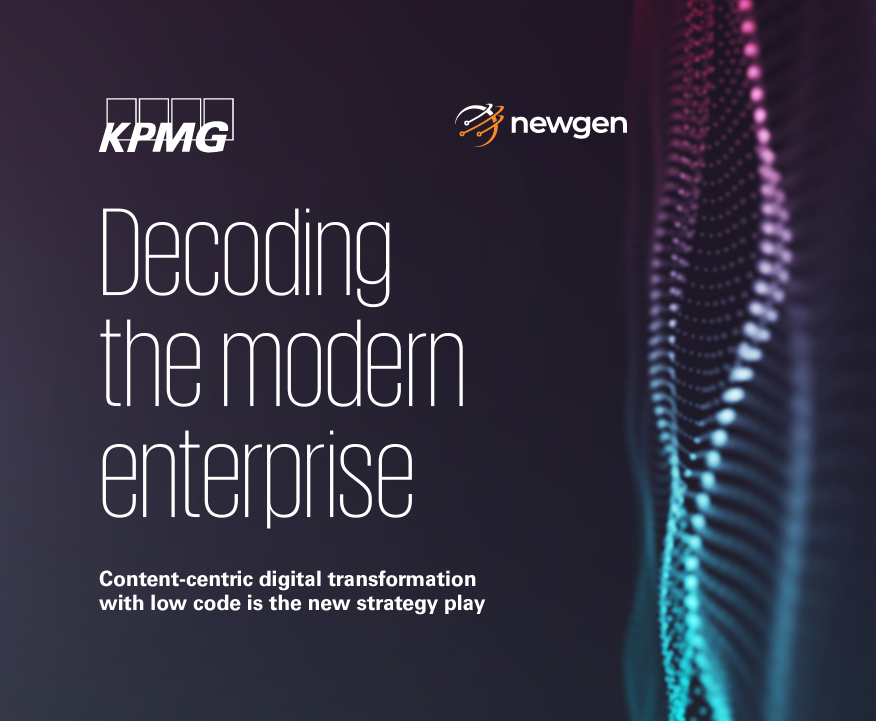Don’t tell Matthew Brogie, CEO of Boston headquartered software company Repsly, that brick-and-mortar retail is dead. He’s been hearing that for 25 years, but brick-and-mortar sales continue to grow. So does his company, which works with consumer packaged goods (CPG) brands to drive more retail sales in physical stores.
We had the opportunity to sit down with Matthew for a wide-ranging discussion about his company, the impact of the pandemic on the retail space, the product development process at Repsly, and much more.
BACKGROUND
Tell me a little bit about Repsly
I love talking about Repsly. I’ve been part of the company since 2012 in one form or another, even before it was Repsly, and officially joined as a real employee in 2014. And I don’t mind running around saying that Repsly is by far the world’s greatest retail execution platform! What that means is we partner with consumer goods companies to drive more sales of their product through retail.
We do that by creating efficiencies in how those brands’ field teams—the people that go out into retail to optimize the presence of their brand—plan and manage their work so that they can focus on the activities that really drive more sales. That can include driving compliance with trade promotions or executing what the industry refers to as “the perfect store,” addressing on-shelf availability issues, and, most important, giving them the time to build relationships with the retail personnel in the stores.
The company itself has been exclusively focused on retail execution solutions for the consumer goods industry for about 15 years. We’re partnered with about 800 customers in more than 80 countries around the world. Everything from emerging brands—I like to say mom and pop making kombucha in their bathtub, just getting into distribution—all the way up to multi-billion-dollar global brands that we do business with, in some cases, across several countries or even continents.
We’re headquartered here in Boston, but we have a significant presence in Zagreb, Croatia, where the company was originally founded. Additionally, we have a network of partners that sell and support the solution in strategic markets around the world.
Could any kind of packaged good company use your software?
Yes. The way I like to think about it is, if a product is sold in Walmart, then that could be a customer of ours. If you think about a floor plan of a Walmart, we have customers that sell through all of the different departments there. So, it’s not just consumer packaged goods, but all consumer goods.
LEANING INTO CHAOS
How did your customers make out during COVID and post-COVID? And were there any adjustments on your part to support them?
 You can imagine the impact, particularly at the start of the pandemic. We sell to brands. We work with brands that have field teams that go out into retail, all of our customers send teams into retail. If a brand doesn’t have a field team, then they’re not a customer of Repsly.
You can imagine the impact, particularly at the start of the pandemic. We sell to brands. We work with brands that have field teams that go out into retail, all of our customers send teams into retail. If a brand doesn’t have a field team, then they’re not a customer of Repsly.
I remember the lockdown in Boston started here on March 13th of 2020. At that time, those field teams had nowhere to go since a lot of the stores were closed. At the time, our office was in Downtown Crossing, and I could look out the window and see Macy’s boarded up. The 7-Eleven across the street was boarded up. Several of the stores actually shut down and haven’t reopened yet. A lot of teams were furloughed, and a lot of them were even disbanded.
That started to stabilize in the back half of 2020 as that initial public panic around “what’s happening with lockdown? What can people actually do? How can retail actually operate?” started to subside. People started to figure out what could happen. Essential products were the first to come back, and it turns out that there are a lot more essential products than you might think.
The COVID era isn’t just the pandemic. It’s all of the chaos that has happened over the past 3 years. A lot of that chaos was in retail. We talk about “chaos at the shelf” during this period.
A lot of that was spawned by the massive economic uncertainty, out-of-control inflation, and supply chain issues like we’ve never seen before. So many factors were driving chaos at the shelf that a lot of our market, the brands that we sell to, felt like they were out of control. They were doing their best to manage the chaos, but they couldn’t predict which product was going to be available to be manufactured, never mind which ones could be delivered to a store.
The control that they were used to having over what happens in the store and what happens at the shelf was no longer part of what they were able to do. They couldn’t impact sales the same way that they were able to impact them before.
That drove CPGs to be more agile. They had to react much more quickly to issues in real time. They had to redeploy their resources more quickly in order to manage the chaos. When they discovered that the supply chain had prevented products from showing up in some stores, but not others, they would move products around.
A lot of our customers scrapped their ideas for doing in-store promotion because they couldn’t rely on the products being there for the promotion. They had to be very agile about how they tried to manage what was going on. I mentioned before that we’ve got about 800 customers, and they run the gamut from people who are trying to figure out what to do to people who have been practicing best-in-class processes for generations.
And what we saw was our best-in-class customers leaned into that chaos. They saw it as an opportunity to outperform their competitors by executing better in the store. One of the differentiators in Repsly is that the product itself is very, very agile and very, very configurable. Our customers have the ability to make changes to what they’re directing their teams to do, and where they’re directing their teams to work. They’re able to make those changes in real time and get those changes deployed to the field in real time.
Our customers that leaned in were the ones that really emerged as the winners during this very chaotic time.
We are seeing signs that this chaos is subsiding. The inflation rate has declined for 12 straight months. The economy actually grew 2.5% last quarter, and the fears of a recession continue to be pushed a little further and a little further. We’re seeing signs that the broader economic issues that are out there are less of a distraction for the CPGs we deal with. The supply chain issues are back to pre-pandemic levels. They’ve subsided considerably from where they were when all the container ships were backed up in the harbors.
During COVID there were winners and losers. Where was Repsly? You had the short-term pain of your customers not being able to go out and do their jobs, but did it provide any opportunities? Was there something that came out of it that was new and surprising?
Well, first, I’ll give you the nuts and bolts. We lost 23% of our revenue in the first 8 or 12 weeks of COVID. So Q2 of 2020 was a tough quarter for the company. But it came back very strong in the back half of the year. Q3 2020 was one of the best quarters we ever had.
What we learned, and I think this was probably a surprise to some people, was that our customers—those best-in-class customers, the ones that really leaned in—found ways to leverage Repsly to help them be agile and help them react and help them do things in the field very quickly. That was very different from what they had planned in the past.
In the past there was a lot of structure to what happened in the field. It was like, “we’ve got these reps, they’re going to these stores, on this schedule, and doing all these things.” What they found is that they could use the software to be extremely agile and make changes on the fly. We didn’t do anything in the product to enhance that. I think our customers just discovered new ways to leverage the product.
It’s a very broad retail execution platform with a lot of capabilities. And I think a lot of our customers were like, “Hey, can you help us figure out how to do this?” or “We’re having trouble identifying this problem that we’re having in the field. Can you help us figure out ways to do that?” And it really was a lot of configuration around the product.
There was one thing that we did differently in our product planning and roadmap. One of the pressures that was put on our industry during that time was outsourcing of field teams. In Q2 of 2020, a lot of field teams were furloughed and disbanded, and then when it was time to bring those field teams back, a lot of people didn’t want to get a job where they were going out into different stores and mingling with a whole bunch of people. Rebuilding those field teams was very difficult for a lot of our customers. Those labor issues still persist in a lot of ways, so what they did was outsource.
There’s a big chunk of our customer base that is what we refer to as MSOs, or merchandising service organizations. They come in a few different flavors: pure merchandisers, brokers, typically food brokers, who also manage the product at the shelf, and distributors who do merchandising and field sales.
A lot of our brands started outsourcing their field teams, and there is a different set of capabilities that goes along with that. Starting in Q3 of 2020 for four to six quarters, we focused a lot on the kind of capabilities that MSOs needed to have to manage the work in the field. That’s different from the way that brands do it. That work has given us the ability to play in both parts of the market more effectively than we were pre-pandemic.
PURSUING INNOVATION
Every day there seems to be a new set of AI applications, including for the supply chain. I can imagine there must be many applications for AI in that space. What have you done so far and what do you see happening?
The piece that we focus on is in-store retail execution, and that’s ripe with opportunities for AI.
We’re seeing the highest interest and the highest opportunities around making sure that the right products are available in the right place, in the right quantities, in order to optimize on-shelf availability. That includes improving the operations around getting the product to the shelf and making sure the right product is there, for the right buyer, who’s going to walk into that store on that day to be able to buy that product.
We’ve started internally using AI. We are trying to bake it into our culture so that everybody spends at least a little bit of time working with ChatGPT and other of the very accessible components of AI that are out there to get comfortable with understanding its limits, understanding the capabilities, and finding ways to reduce the effort that they have to put in to create documents or polish them, or prepare internal communications, things like that.
 There are ways that we can use AI internally to make us more efficient. We’re using some forms of AI to do things like pattern matching when we’re bringing data in for our customers and making sure that we eliminate duplicate data when we’re bringing place data into the system. We’re using it to make our implementations for our customers more efficient. As far as what we’re bringing to the customer base and to the CPG space, that’s much more exciting.
There are ways that we can use AI internally to make us more efficient. We’re using some forms of AI to do things like pattern matching when we’re bringing data in for our customers and making sure that we eliminate duplicate data when we’re bringing place data into the system. We’re using it to make our implementations for our customers more efficient. As far as what we’re bringing to the customer base and to the CPG space, that’s much more exciting.
We recently ran a hackathon with a pure AI focus within our product and R&D team. The prompt was to identify and deploy a proof of concept for how AI can bring more value to our customers. We had about 30 ideas—and while it was hard, we narrowed it down to 10 and then finally down to 7. We had seven teams that spent a portion of their normal R&D time to develop proofs of concept.
Not only did the team get a lot of energy through the process, but we came up with some really exciting ideas. Everything from chat-enabled optimization of how the Repsly system is operated—being able to natural-language talk to Repsly and say, “Hey Repsly, I’d like to build a form to collect data about the performance of my promotion that’s running at CVS this month” and have the system give you suggestions on how to optimize a form for that—to prepping the rep for a store visit.
The winning idea on our hackathon was actually “prep the rep.” A rep could interact with Repsly on their mobile phone, basically speak to it, and ask for example, “How can I prepare myself for this meeting? Tell me a little bit about the manager I’m going to meet with. Is this the person that worries about efficiency more than they worry about effectiveness?”
The rep could talk to the system or look through all the history that we know about our interactions with that customer—orders they’ve placed, products, sales data, velocity of products— and give the rep tips on when they go into that store, how to be more effective and more efficient when they walk into the store.
Super exciting stuff. We are committed to taking at least one of those ideas from the hackathon and getting it implemented into our product before the end of this year.
Then the other area is image recognition. We did a survey of our customers about two or three months ago, asking them what they thought about AI and how they thought it could be applied. Most of our customers connected AI to image recognition, and they’re right, it is one of the flavors of AI and machine learning. There’s a lot going on in that space as well.
We’ve implemented image recognition for some of our customers over the last three or four quarters. For those customers, we offer image recognition for retail execution, which is the ability for the system to recognize the product – where it is on the shelf and what it’s near on the shelf, and being able to determine whether it’s in compliance or out of compliance with the planogram.
This increases the speed with which reps can identify issues like which products are missing from the shelf that are supposed to be for sale in that store, issues with planograms, things like that, so they can more accurately and more efficiently identify issues that they can fix, which will then subsequently help them sell more products.
And then there’s one other. It’s not part of the product yet, I expect that we’ll have it productized in the coming couple of quarters. We’re working with a very large CPG that sells high-velocity items through grocery, and we’ve implemented the ability to identify product availability issues based on sell-through data and inventory data.
This solution enables us to identify on-shelf availability issues through pattern recognition in sales data, inventory data, shipment data, whatever pieces of data we can get our hands on, and then layers on top of that prioritization rules. So, looking at “Okay, this product has an on-shelf availability issue in this store. That product has some issues in that store, which one is more valuable for me to fix? Where should I actually deploy my resources to go fix? What’s the prioritization that I should do there?”
That’s the kind of thing that I think is transformational about how retail execution works today, can work, and will work better in the future. I mentioned before there used to be a lot of structure to how retail execution worked. Typically, it would be something like, “I have a team of 100 people, we have to cover 10,000 stores. We visit our A stores once a week, our B stores twice a month, our C stores, whenever we can get to them, and that’s it. Go.” And it’s very expensive. You know, you put 100 people in the field, you’re actually spending quite a bit of money on that. It’s a big investment. And now, you can deploy people specifically to where there are problems.
Is that the typical blend of how you develop new features and functionality, a mix of internal brainstorming through hackathons or other means, plus customer surveys? Are you out in the field at all with reps trying to see what their pain points are?
It’s all of the above. We have 800 customers to listen to. It is pretty awesome. And we have a best-in-class customer success organization that meets with customers on a regular basis. Part of their relationship building with our customers is talking about the kind of things we’re trying to get accomplished, and the CS team provides that feedback into the product team. We also go on as many ride-alongs as we can. Over the last 20 years, I’ve probably been on a thousand of those!
We go as frequently as we possibly can, all the people in the company. My CFO went on a ride-along a couple of months ago because he wants to know what’s happening out there, what our customers are doing. The engineers, software engineers, go on ride-alongs to see how the product’s being used out in the field.
 The other thing that I think we do a really good job of is that we’ve got a very strong product organization, structured product team and organization. They’re very disciplined at what they do. They don’t say yes to every customer request, but they listen to every customer request. What they’re really good at doing is listening to a whole bunch of requests and then looking for patterns in those requests, abstracting it up to something that can be productized in a way that is flexible and can apply to not just the guy who sells condiments through grocery stores, but also the person that sells vitamins through CVS or GNC. So we do a lot of synthesis of customer input as well.
The other thing that I think we do a really good job of is that we’ve got a very strong product organization, structured product team and organization. They’re very disciplined at what they do. They don’t say yes to every customer request, but they listen to every customer request. What they’re really good at doing is listening to a whole bunch of requests and then looking for patterns in those requests, abstracting it up to something that can be productized in a way that is flexible and can apply to not just the guy who sells condiments through grocery stores, but also the person that sells vitamins through CVS or GNC. So we do a lot of synthesis of customer input as well.
LOOKING TOWARD THE FUTURE
Given that your software is for field teams going into brick-and-mortar stores, do you have a long-term view about that e-commerce/brick-and-mortar balance? And is there something you’re doing to prepare your product more for the e-commerce side?
That hasn’t been a focus for us. We’ve heard brick-and-mortar is dead for 25-plus years, and it’s not. In fact, it’s thriving. And what we’re deciding to do is to stay very, very focused on the part of the industry that leverages brick-and-mortar retail.
It’s not to say there’s not a connection because there is a connection. You hear about omnichannel. Omnichannel’s been a buzzword for three or four years. The ability to mix a consumer’s experience online and in-store. You see people in-store shopping on their phone while they’re shopping for products on the shelf and all of that.
But we deal with the people that go into the store on behalf of the brand, it’s not direct, it’s not B2C. We’re not really dealing with the consumers. We’re dealing with those brands that are trying to optimize the sales of their product on the shelf, in the store. And we do support any kind of trade promotion that they’re trying to do in those stores, and a lot of those are tied to what they’re doing online as well.
Our customers are telling us that they may have over-indexed on e-commerce. You know, during the pandemic e-commerce sales grew about 100% year over year. And a lot of our consumer brands companies were like, “Okay, this is it. This is the death of retail that people have been talking about for 20 years.” And what they’re telling us now is that they’ve over-indexed on that. E-commerce sales growth has flattened considerably over the last six quarters.
Retail sales, brick-and-mortar retail sales, continue to grow, not quite at the same rate as e-commerce, but they do continue to grow, and our customers say, “Wow, we’re still doing eighty-plus percent of our sales through brick-and-mortar retail, we have to refocus on that.” So, I’ve been hearing more over the last three or four months about our customers saying, “We’ve got to get back to perfect store execution. We’ve got to get back to compliance management. We’ve got to get back to really executing extremely well in the store.” That’s all music to my ears.
As you’re looking ahead, what has you the most excited and motivated about the industry? And is there anything that’s keeping you up?
I’ve been in the space for a long time, and for 25 years I’ve been hearing retail is dead, retail is dead. And the more I hear that, the more I’m determined to just focus on that part of the business, partly because other people are scared off by it. When we went and raised money for the company back in 2018 and 2019, I was hearing from a lot of investors, “Oh, retail is dead,” and then they would shut the door and run away. But there was a small pocket of them that were like, “No, we love retail tech. It’s an exciting place.” And it is an exciting place.
There’s a ton of innovation that goes on there with all the pressures that get put on retailers. Brick-and-mortar retail is a multi-trillion-dollar industry. A lot of pressure on that industry forces it to change a lot—new packaging, crazy marketing collaborations. One of our customers, Nutrabolt, who makes C4 energy products, just announced a collaboration today with WWE, Worldwide Wrestling. Another one of our customers, Swoon, is doing a collaboration with Mattel on Barbie. We get to see and be exposed to all of these things.
All that change that happens, I love being part of that ecosystem. I love being part of our brands. I love the stories they tell us about how they’re using the software to drive their promotions. I love getting exposure to some of the back room of what goes on with promotions and promotion marketing.
From a tech perspective, I think that the evolution of highly targeted ‘in real-life’ marketing is something that we’re going to see. And I’m not sure yet what our role is going to be in that, but it’s something that I think is going to be super interesting. It already exists in the online world where, no matter where you go, you’re getting ads that are targeted at you. Some people love it, some people hate it, but it’s a fact of life. Having that happen in real life so that when you’re out in the store and you’re standing at the shelf, I’m imagining that there will be either videos or holograms or something that are generated almost on the fly, in real-time, either because you were carrying your phone and it recognized your proximity or because it recognized you and will market directly to you.
I think that kind of innovation is really cool. Some people are scared off by it, but I’m not scared by it. I’m really intrigued by it, and I love being part of all of that. As far as what keeps me up, really, there’s not a lot that keeps me up. Like I said, I’ve been hearing retail is dead, but last year twice as many retail shops opened then closed. I think about 2,500 closed last year, but 5,000 opened.
Anything that we didn’t cover, that you wanted to add in?
I honestly believe that I work for the best retail execution platform company on the market. I love being a leader in the space and working with the team I work with. There are about 70 of us in the company right now. Across the board, the entire Repsly team is awesome, committed, talented. They lean in, they’re excited about what we’re doing. It’s not hard to keep motivated every single day. When you combine how dynamic the space is that we’re serving, how much our customers rely on us to do a great job for them, and a team that’s really committed to getting it done, it’s fabulous. I love my job.



